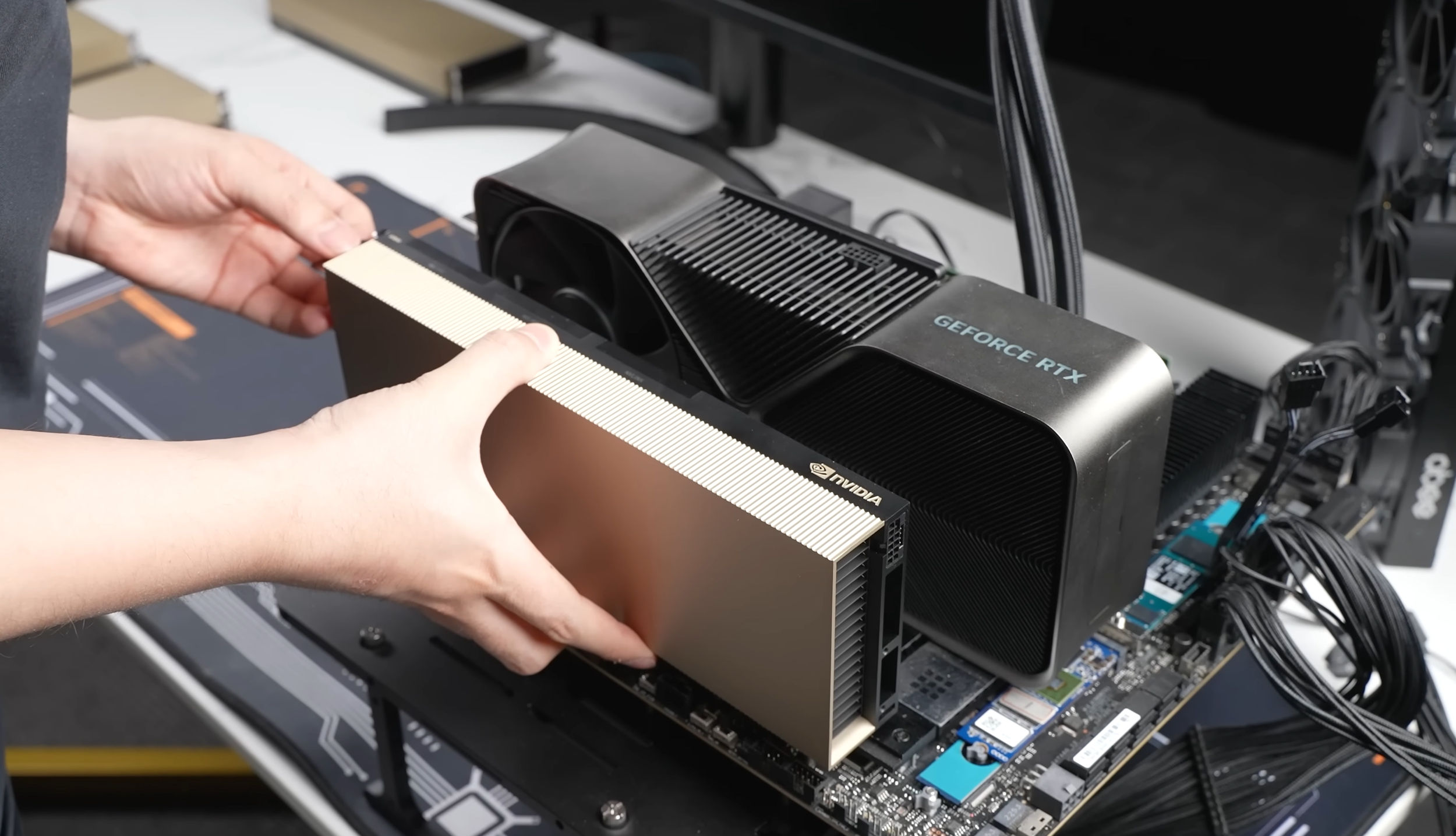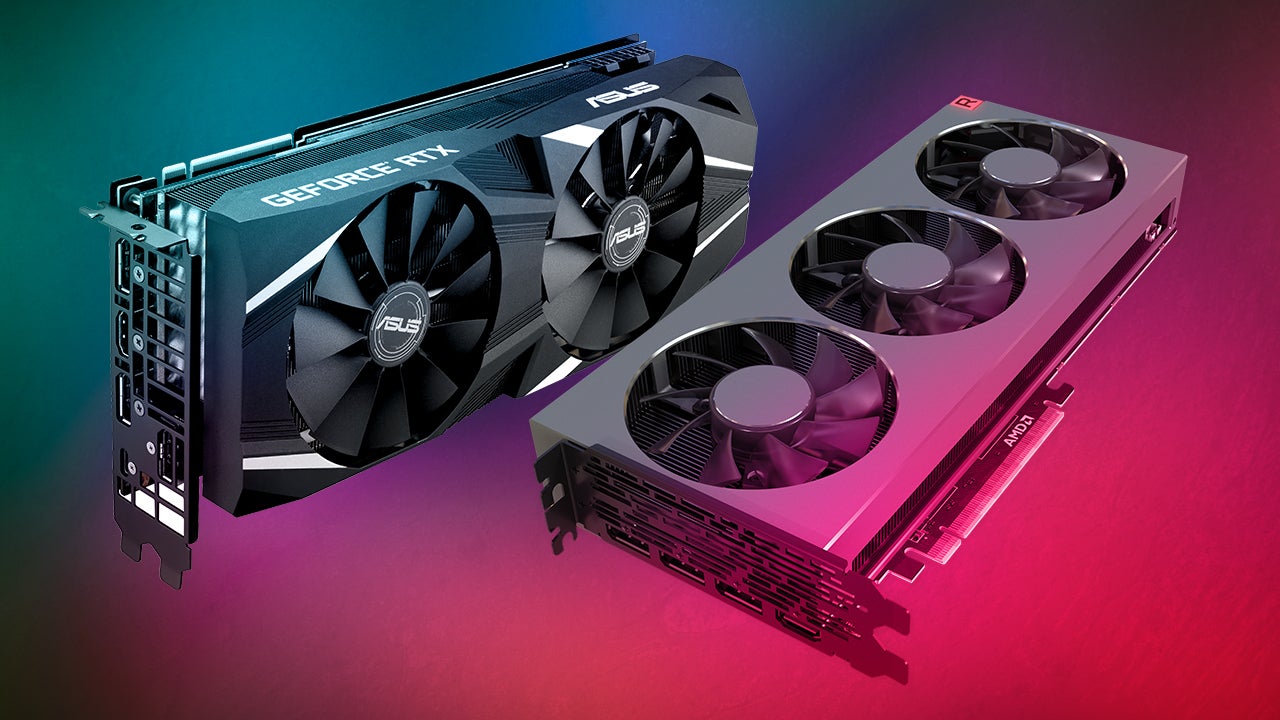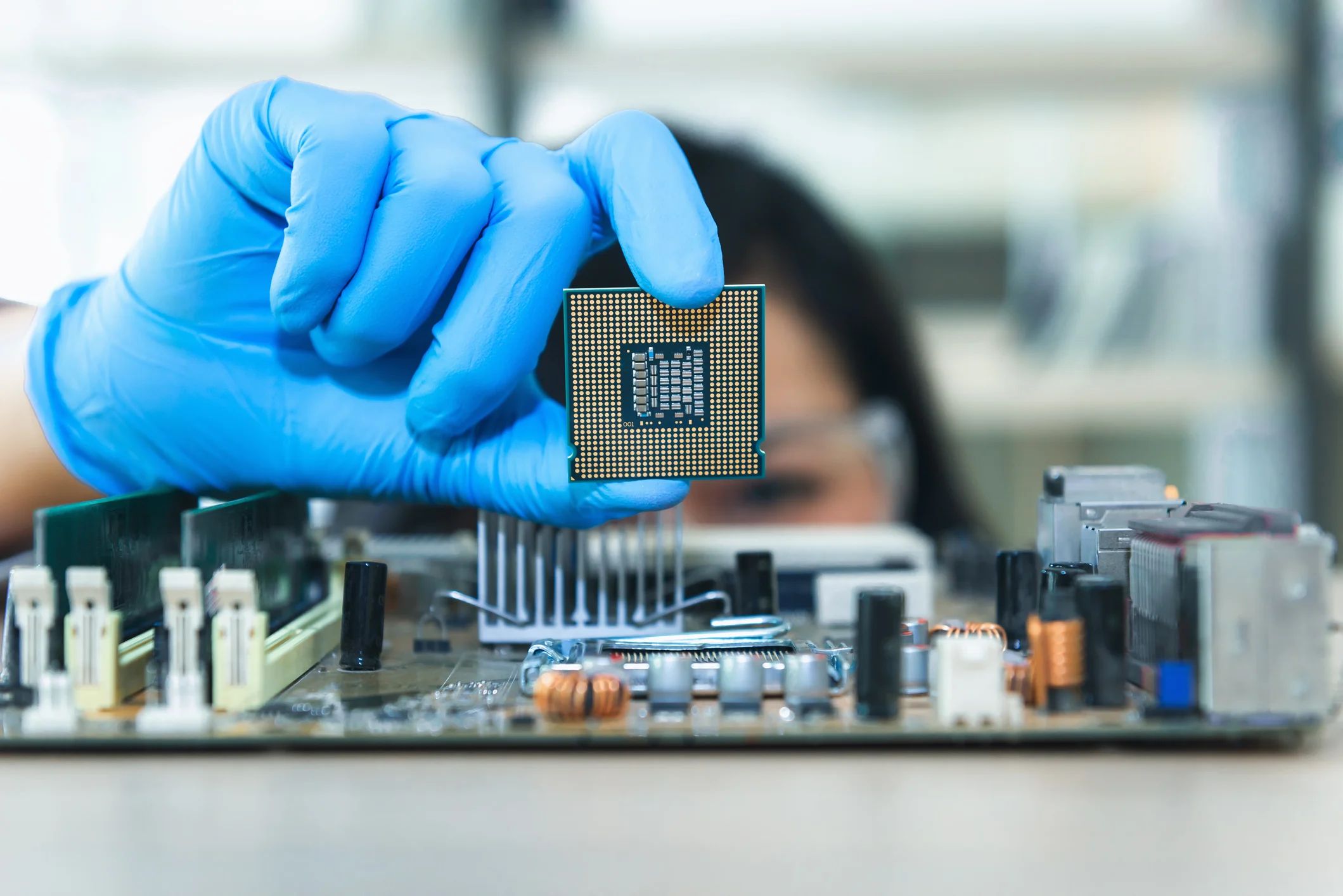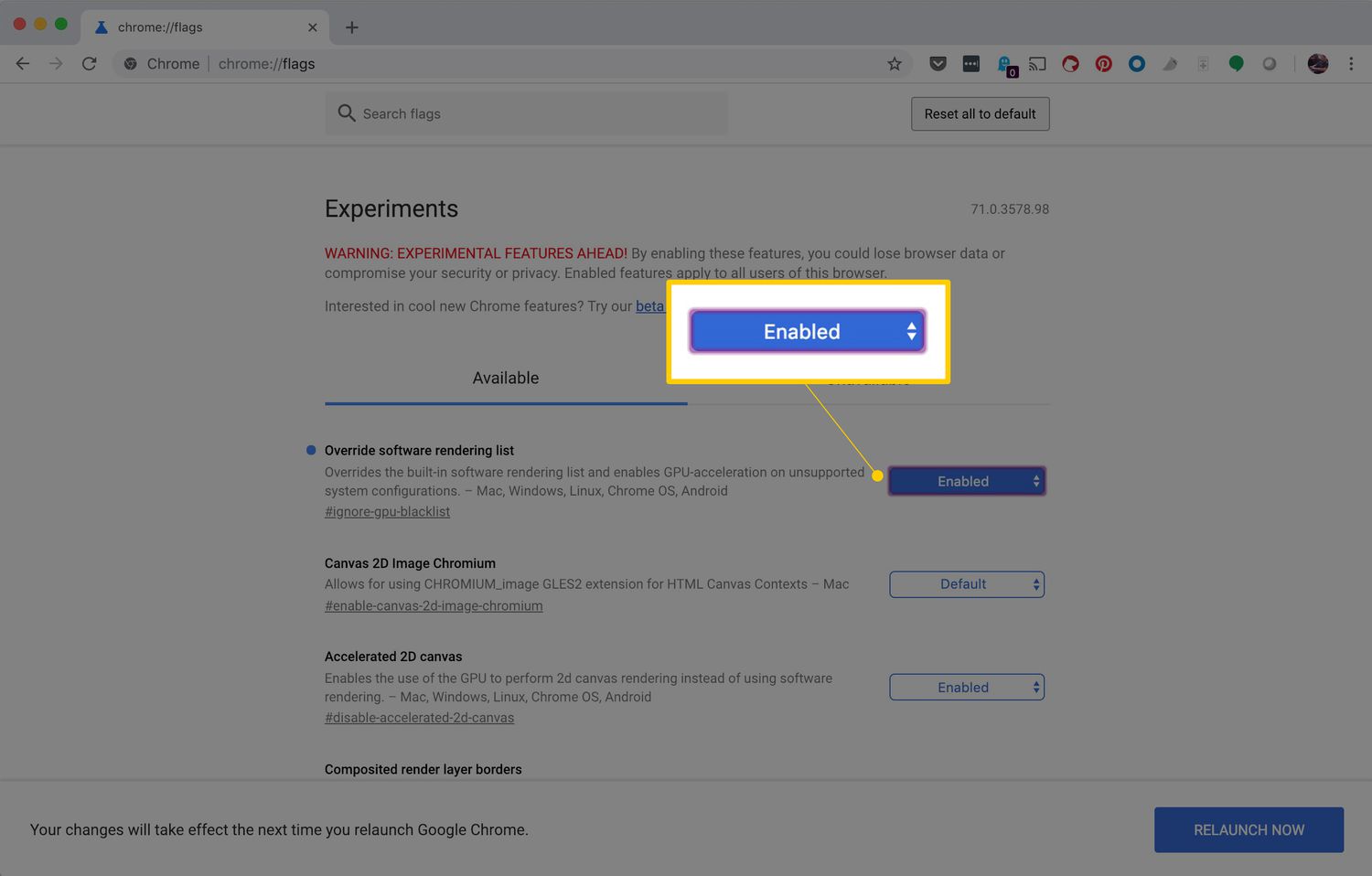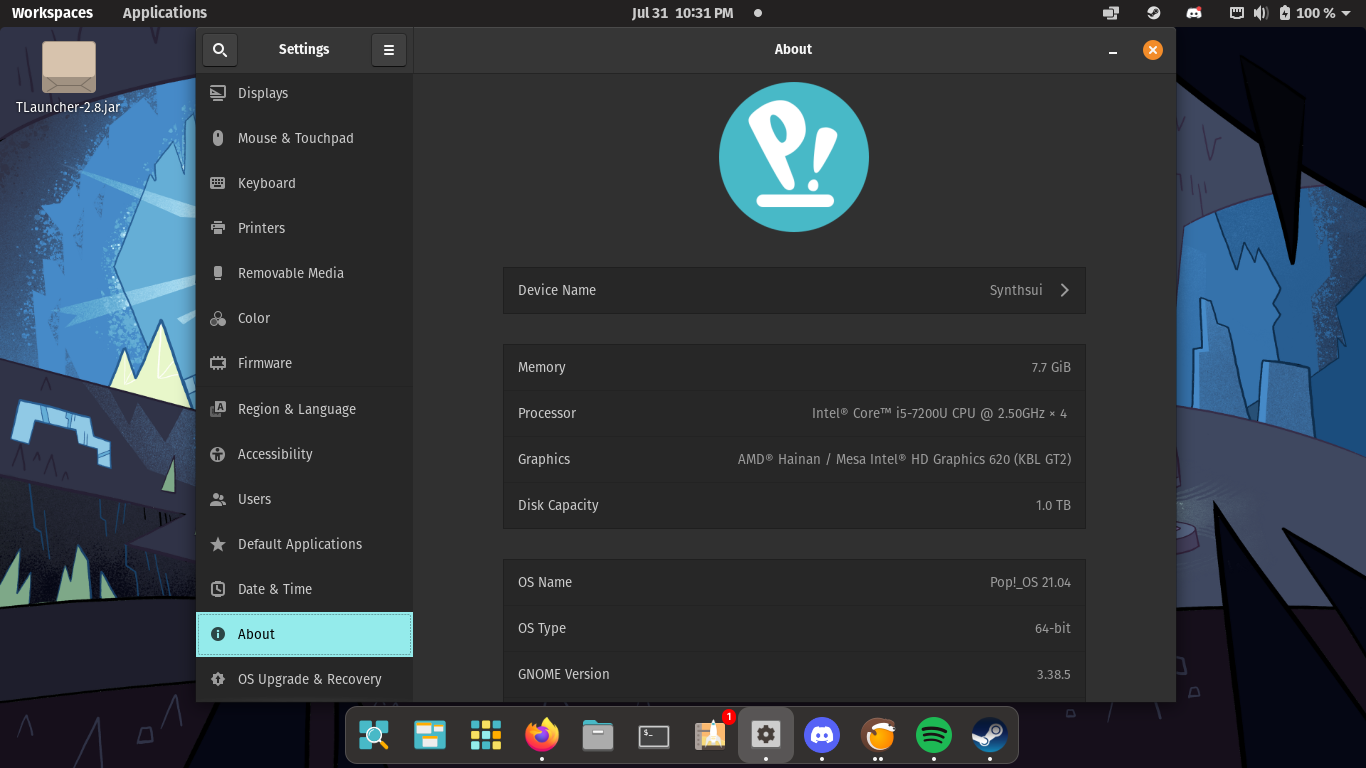Introduction
Technology continues to evolve at a rapid pace, and with it comes a host of new features and capabilities. One such feature that has gained prominence in the world of graphics processing is Hardware Accelerated GPU Scheduling. This innovation aims to optimize graphics performance by offloading specific tasks from the CPU to the graphics processing unit (GPU).
Hardware Accelerated GPU Scheduling utilizes the GPU’s hardware scheduler instead of relying on the CPU’s scheduler. By doing so, it enables more efficient utilization of the GPU’s resources, resulting in improved graphics performance, reduced latency, and smoother frame rates.
While Hardware Accelerated GPU Scheduling offers many benefits, there may be instances where you need to consider disabling it. In this article, we will delve into the reasons for disabling this feature and provide step-by-step instructions to guide you through the process on Windows 10 and Windows 11.
Before we dive into the disabling process, let’s explore the advantages of Hardware Accelerated GPU Scheduling and why it has become a sought-after feature among PC enthusiasts and gamers.
What is Hardware Accelerated GPU Scheduling?
Hardware Accelerated GPU Scheduling is a feature introduced by Microsoft in Windows 10 version 2004 and continued in Windows 11. It aims to enhance the efficiency and performance of graphics processing by allowing the GPU to take control of its own scheduling responsibilities.
In traditional systems, the CPU handles the scheduling of tasks for both the CPU and GPU. This means that the CPU has to juggle multiple tasks, including graphics-related ones, causing potential delays and performance bottlenecks. With Hardware Accelerated GPU Scheduling, the GPU is empowered to manage its own tasks, freeing up valuable CPU resources and streamlining the processing of graphics-intensive workloads.
By enabling this feature, the GPU can directly communicate with the operating system’s graphics stack and manage the execution of graphics commands. This results in reduced overhead, improved efficiency, and faster rendering times. Additionally, it allows for smoother frame rates, lower latency, and a more responsive overall graphics experience, especially in demanding applications like games, 3D rendering, and video editing.
Hardware Accelerated GPU Scheduling operates on a separate hardware scheduler within the GPU. This scheduler efficiently distributes tasks to different GPU execution units, ensuring optimal utilization of the GPU’s resources. By offloading scheduling responsibilities from the CPU to the GPU, it reduces the CPU’s workload and minimizes performance bottlenecks, leading to smoother graphics performance.
It’s important to note that while Hardware Accelerated GPU Scheduling is a valuable feature, its effectiveness may vary depending on the specific hardware and software configurations of your system. Some users might experience significant performance improvements, while others may see more modest gains. Therefore, it’s essential to evaluate the impact on your specific use cases and workflow before deciding whether to enable or disable this feature.
Benefits of Hardware Accelerated GPU Scheduling
Hardware Accelerated GPU Scheduling brings several advantages to users, especially those who engage in graphics-intensive tasks or gaming. Let’s explore some of the key benefits of enabling this feature:
1. Improved Graphics Performance:
By allowing the GPU to manage its own scheduling, Hardware Accelerated GPU Scheduling reduces the burden on the CPU. This results in improved graphics processing performance, as the GPU can efficiently allocate resources and execute tasks without relying heavily on the CPU’s availability. As a result, you can experience smoother frame rates, reduced stuttering, and enhanced overall graphics performance.
2. Reduced Latency:
Minimizing latency is crucial, especially in real-time applications like gaming or video streaming. With Hardware Accelerated GPU Scheduling, the GPU can quickly process and render graphics commands, leading to lower latency and a more responsive experience. Actions performed in games or demanding applications can be executed and displayed on the screen more quickly, enhancing the overall responsiveness and reducing any input lag.
3. Optimal Resource Utilization:
Hardware Accelerated GPU Scheduling enables the GPU’s hardware scheduler to efficiently distribute tasks among different GPU execution units. This optimizes the utilization of the GPU’s resources, preventing idle time and ensuring that each unit is utilized to its maximum potential. As a result, you can achieve better performance in graphics-intensive applications that rely heavily on the GPU.
4. Enhanced Energy Efficiency:
By freeing up the CPU from managing graphics-related tasks, Hardware Accelerated GPU Scheduling helps reduce the overall power consumption of the system. This can lead to better energy efficiency, especially when running graphics-intensive applications or games for extended periods. Additionally, the reduced load on the CPU can also contribute to lower system temperatures.
5. Future-Proofing:
As graphics technology continues to advance, enabling Hardware Accelerated GPU Scheduling ensures that your system is prepared for future advancements. By leveraging the GPU’s hardware scheduler, your system can take advantage of newer graphics API features and performance optimizations that may become available in future software updates. This can result in better compatibility and improved performance in upcoming games and graphics-intensive applications.
Overall, Hardware Accelerated GPU Scheduling offers tangible benefits for users who rely on their GPU for graphics-intensive tasks and gaming. However, it’s important to note that the extent of these benefits may vary depending on your specific hardware and software configuration. It’s recommended to evaluate the impact on your system’s performance and compatibility before enabling or disabling this feature.
Reasons to Disable Hardware Accelerated GPU Scheduling
While Hardware Accelerated GPU Scheduling brings significant performance benefits for many users, there are certain scenarios where disabling this feature might be desirable. Let’s explore some of the reasons why you might consider disabling Hardware Accelerated GPU Scheduling:
1. Compatibility Issues:
Although Microsoft has made efforts to ensure broad compatibility, there might still be instances where certain hardware drivers or software applications are not fully optimized for Hardware Accelerated GPU Scheduling. In such cases, you may encounter compatibility issues, including graphical glitches, application crashes, or performance degradation. Disabling this feature can help resolve such compatibility issues by reverting to the traditional CPU-driven graphics scheduling.
2. Driver or Software Instability:
In some cases, enabling Hardware Accelerated GPU Scheduling can introduce instability in certain driver versions or software configurations. This can manifest as system crashes, freezing, or unusual behavior in graphics-intensive applications. If you experience such instability after enabling this feature, disabling it can be a viable troubleshooting step to restore system stability.
3. Specific Workload Performance:
While Hardware Accelerated GPU Scheduling generally improves graphics performance, certain specific workloads or applications might not benefit from this feature. In such cases, disabling it can restore optimal performance for those particular workloads. For example, if you find that a specific game or application runs better with the traditional CPU-driven graphics scheduling, disabling Hardware Accelerated GPU Scheduling can be a viable option.
4. Experimental or Beta Features:
If you are using experimental or beta versions of graphics drivers or software, it is possible that some features, including Hardware Accelerated GPU Scheduling, may not function as intended or may conflict with other experimental features. Disabling this feature in such scenarios can help ensure smoother operation and compatibility with the experimental or beta software you are using.
5. Personal Preference or Custom Configuration:
Every individual’s system configuration and preferences are unique. If you have experimented with different settings and found that disabling Hardware Accelerated GPU Scheduling works better for your specific use case, it’s perfectly valid to disable it. It allows you to have full control over your system’s graphics processing and prioritize specific aspects that matter most to you, such as compatibility, stability, or specific application performance.
Ultimately, the decision to disable Hardware Accelerated GPU Scheduling should be based on your specific needs, hardware configuration, and software ecosystem. It’s recommended to weigh the benefits and potential drawbacks of this feature in your particular use case to make an informed decision.
How to Check if Hardware Accelerated GPU Scheduling is Enabled
Before proceeding with disabling Hardware Accelerated GPU Scheduling, it’s important to verify whether this feature is currently enabled on your Windows system. Follow these steps to check if Hardware Accelerated GPU Scheduling is enabled:
Step 1: Open the DirectX Diagnostic Tool
Press the Windows key + R on your keyboard to open the Run dialog box. Type “dxdiag” (without quotes) and hit Enter. This will open the DirectX Diagnostic Tool.
Step 2: Navigate to the Display tab
In the DirectX Diagnostic Tool window, navigate to the Display tab by clicking on it.
Step 3: Check for Hardware Accelerated GPU Scheduling
Look for the “Hardware Accelerated GPU Scheduling” line in the Device section of the Display tab. If it says “Enabled,” then Hardware Accelerated GPU Scheduling is currently enabled on your system. If it says “Disabled” or you don’t see the option, then it is not enabled.
Note: The availability and visibility of the “Hardware Accelerated GPU Scheduling” option may vary depending on your GPU and driver version. If you don’t see the option, it’s likely that your hardware or driver does not support this feature.
By following these steps, you can determine whether or not Hardware Accelerated GPU Scheduling is currently enabled on your Windows system. If it is enabled and you want to disable it for any reason, continue reading to learn how to disable it on both Windows 10 and Windows 11.
How to Disable Hardware Accelerated GPU Scheduling on Windows 10
If you have determined that Hardware Accelerated GPU Scheduling is enabled on your Windows 10 system and you wish to disable it, follow these step-by-step instructions:
Step 1: Open Graphics Settings
Right-click on the desktop and select “Graphics Settings” from the context menu. This will open the Graphics Settings window.
Step 2: Disable Hardware Accelerated GPU Scheduling
In the Graphics Settings window, scroll down to the “Hardware-accelerated GPU scheduling” section. Toggle the switch to the “Off” position to disable Hardware Accelerated GPU Scheduling.
Step 3: Restart your Computer
Once you have disabled Hardware Accelerated GPU Scheduling, it is recommended to restart your computer to apply the changes. This ensures that the system properly reverts to the traditional CPU-driven graphics scheduling.
After the restart, Hardware Accelerated GPU Scheduling should be disabled on your Windows 10 system. You can verify this by following the steps in the previous section to check if the feature is enabled.
Now that you know how to disable Hardware Accelerated GPU Scheduling on Windows 10, let’s move on to the process for Windows 11 in the next section.
Step 1: Open Graphics Settings
To disable Hardware Accelerated GPU Scheduling on Windows 10, you first need to open the Graphics Settings window. Here are the steps to follow:
Method 1: Using the Context Menu
1. Right-click on an empty area of your desktop. This will open a context menu.
2. From the context menu, select “Graphics Settings.” This will open the Graphics Settings window.
Method 2: Using the Start Menu
1. Click on the Start button in the bottom-left corner of your screen to open the Start Menu.
2. In the Start Menu, search for “Graphics settings” and click on the “Graphics settings” app that appears in the search results. This will open the Graphics Settings window.
Regardless of which method you choose, following these steps will open the Graphics Settings window on your Windows 10 system. From here, you can proceed to the next step to disable Hardware Accelerated GPU Scheduling.
Note: If you don’t see the “Graphics Settings” option in the context menu or the “Graphics settings” app in the Start Menu, it is possible that your system does not have the necessary graphics drivers or it does not support the feature. You may need to update your graphics drivers or check if your hardware supports Hardware Accelerated GPU Scheduling.
Step 2: Disable Hardware Accelerated GPU Scheduling
Once you have opened the Graphics Settings window on your Windows 10 system, you can proceed to disable Hardware Accelerated GPU Scheduling. Follow these steps:
1. Locate the Hardware-accelerated GPU scheduling option
In the Graphics Settings window, scroll down until you find the “Hardware-accelerated GPU scheduling” section. This is where you can enable or disable the feature.
2. Toggle the switch to the “Off” position
In the “Hardware-accelerated GPU scheduling” section, you will see a toggle switch adjacent to the option. By default, it is set to the “On” position, indicating that Hardware Accelerated GPU Scheduling is enabled.
To disable it, simply click on the switch and toggle it to the “Off” position. The switch will change its state, indicating that Hardware Accelerated GPU Scheduling is now disabled.
3. Close the Graphics Settings window
Once you have successfully disabled Hardware Accelerated GPU Scheduling, you can close the Graphics Settings window. Click on the “X” button in the top-right corner of the window, or simply click outside the window to close it.
By following these steps, you have successfully disabled Hardware Accelerated GPU Scheduling on your Windows 10 system. This reverts the graphics scheduling responsibility back to the CPU. To apply the changes, it is recommended to restart your computer, as mentioned in the next step.
Step 3: Restart your Computer
After disabling Hardware Accelerated GPU Scheduling on your Windows 10 system, it is important to restart your computer to ensure that the changes take effect properly. Restarting your computer allows the system to reconfigure the graphics settings and revert to the traditional CPU-driven graphics scheduling. Follow these steps to restart your computer:
1. Save your work and close any open applications
Prior to restarting, make sure to save any unsaved work and close all open applications. This ensures that you don’t lose any important data and that the restart process goes smoothly.
2. Open the Start Menu
Click on the Start button located in the bottom-left corner of your screen to open the Start Menu.
3. Select the Power icon
In the Start Menu, look for the power icon, which resembles a circle with a vertical line inside. Click on this icon to open the power options menu.
4. Select Restart
In the power options menu, select the “Restart” option. This will initiate the restart process.
5. Wait for your computer to restart
Once you have selected the Restart option, your computer will begin the restart process. Wait patiently for the computer to shut down, reboot, and fully restart.
After your computer has restarted, the changes you made to the Hardware Accelerated GPU Scheduling settings will be applied. You can now check if the feature is disabled by following the steps mentioned earlier to verify its status.
Restarting your computer completes the process of disabling Hardware Accelerated GPU Scheduling on your Windows 10 system. The system will now rely on the CPU for graphics scheduling. If you wish to re-enable the feature in the future, you can follow the same steps we discussed but toggle the switch to the “On” position instead.
How to Disable Hardware Accelerated GPU Scheduling on Windows 11
If you are using Windows 11 and want to disable Hardware Accelerated GPU Scheduling, follow these step-by-step instructions:
Step 1: Open Display Settings
Right-click on the desktop and select “Display settings” from the context menu. This will open the Windows Settings app with the Display settings page.
Step 2: Open Graphics Settings
In the Display settings page, scroll down to the bottom and click on the “Graphics settings” link. This will open the Graphics settings page.
Step 3: Disable Hardware Accelerated GPU Scheduling
In the Graphics settings page, under the “Hardware-accelerated GPU scheduling” section, you will find a toggle switch. By default, the toggle switch is set to the “On” position, indicating that Hardware Accelerated GPU Scheduling is enabled.
To disable it, simply click on the toggle switch and change its position to the “Off” position. This will disable Hardware Accelerated GPU Scheduling on your Windows 11 system.
Step 4: Restart your Computer
After disabling Hardware Accelerated GPU Scheduling, it is recommended to restart your computer to apply the changes. Restarting will ensure that the system properly reconfigures the graphics settings and disables the feature.
To restart your Windows 11 computer, click on the Start button in the bottom-left corner, click on the Power button, and select “Restart” from the options. Wait for the computer to shut down and reboot.
Once your computer has restarted, Hardware Accelerated GPU Scheduling will be disabled on your Windows 11 system. If you want to verify the status of the feature, you can follow the steps mentioned earlier to check if it is enabled or disabled.
Now you know how to disable Hardware Accelerated GPU Scheduling on Windows 11. Remember that you can always enable the feature again by following the same steps and toggling the switch to the “On” position.
Step 1: Open Display Settings
To disable Hardware Accelerated GPU Scheduling on your Windows 11 system, you need to start by opening the Display Settings. Follow these steps:
Method 1: Using the Context Menu
1. Right-click on an empty area of your desktop. This will bring up a context menu.
2. From the context menu, select “Display settings.” This will open the Display settings page in the Windows Settings app.
Method 2: Using the Start Menu
1. Click on the Start button in the bottom-left corner of the screen to open the Start Menu.
2. In the Start Menu, search for “Display settings” and click on the “Display settings” app that appears in the search results. This will open the Display settings page in the Windows Settings app.
Regardless of which method you choose, following these steps will open the Display settings page on your Windows 11 system. From here, you can proceed to the next step to disable Hardware Accelerated GPU Scheduling.
Note: If you don’t see the “Display settings” option in the context menu or the “Display settings” app in the Start Menu, it is possible that your system does not have the necessary graphics drivers or it does not support Hardware Accelerated GPU Scheduling. You may need to update your graphics drivers or check if your hardware supports this feature.
Step 2: Open Graphics Settings
After opening the Display Settings page on your Windows 11 system, the next step is to navigate to the Graphics Settings. Follow these steps:
1. Scroll down to the bottom of the Display settings page
Scroll down the Display settings page until you reach the bottom. The Graphics settings option is located towards the end of the page.
2. Click on the Graphics settings link
Click on the “Graphics settings” link. This will open the Graphics settings page, where you can access various graphics-related settings and configurations.
By clicking on the Graphics settings link, you will be directed to the corresponding page where you can manage graphic settings for your Windows 11 system.
Note: If you do not see the “Graphics settings” link in the Display settings page, it is possible that your system does not support Hardware Accelerated GPU Scheduling, or there may be specific hardware or driver requirements for this feature. Make sure to check the compatibility of your hardware and drivers.
Step 3: Disable Hardware Accelerated GPU Scheduling
Once you have accessed the Graphics settings page on your Windows 11 system, you can proceed to disable Hardware Accelerated GPU Scheduling. Here’s how:
1. Locate the Hardware Accelerated GPU Scheduling option
In the Graphics settings page, look for the “Hardware Accelerated GPU Scheduling” section. This section will allow you to enable or disable this feature.
2. Toggle the switch to the “Off” position
Within the “Hardware Accelerated GPU Scheduling” section, you will find a toggle switch. By default, it is set to the “On” position, indicating that Hardware Accelerated GPU Scheduling is enabled.
To disable it, simply click on the toggle switch and change its position to the “Off” position. The switch will change its state, indicating that Hardware Accelerated GPU Scheduling is now disabled.
3. Close the Graphics settings page
Once you have disabled Hardware Accelerated GPU Scheduling, you can close the Graphics settings page. Simply click on the “X” button in the top-right corner of the window, or navigate away from the page to close it.
After disabling Hardware Accelerated GPU Scheduling, ensure that you save any pending work, as the changes will take effect immediately. To complete the process, it is recommended to restart your computer, as mentioned in the next step.
Step 4: Restart your Computer
After disabling Hardware Accelerated GPU Scheduling on your Windows 11 system, it is important to restart your computer to apply the changes effectively. Restarting allows the system to reconfigure the graphics settings and ensure that Hardware Accelerated GPU Scheduling is fully disabled. Follow these steps to restart your computer:
1. Save your work and close any open applications
Prior to restarting, make sure to save any unsaved work and close all open applications. This ensures that you don’t lose any important data and that the restart process goes smoothly.
2. Open the Start Menu
Click on the Start button located in the bottom-left corner of your screen. This will open the Start Menu.
3. Click on Power
In the Start Menu, click on the Power icon, which appears as a circle with a vertical line inside it. This will open a submenu with power-related options.
4. Click on Restart
In the Power submenu, click on the “Restart” option. Windows 11 will initiate the restart process.
5. Wait for your computer to restart
Allow your computer some time to shut down, reboot, and fully restart. The time it takes for the restart process to complete may vary depending on your system’s specifications.
Once your computer has restarted, Hardware Accelerated GPU Scheduling will be disabled on your Windows 11 system. You can confirm this by following the earlier steps to check the status of the feature.
Remember that restarting your computer is essential to ensure that the changes take effect. It also allows your system to revert to the traditional CPU-driven graphics scheduling. If you ever decide to re-enable Hardware Accelerated GPU Scheduling, you can follow the same steps and toggle the switch to the “On” position.
Conclusion
Hardware Accelerated GPU Scheduling is a feature that can significantly enhance graphics performance and efficiency on both Windows 10 and Windows 11 systems. By offloading graphics processing tasks from the CPU to the GPU’s hardware scheduler, it can lead to smoother frame rates, reduced latency, and better resource utilization. However, there may be instances where disabling this feature is necessary or desirable.
In this article, we discussed the process of disabling Hardware Accelerated GPU Scheduling on both Windows 10 and Windows 11 systems. We explored the steps involved in checking if the feature is enabled and provided detailed instructions on disabling it, ensuring that your system reverts back to the traditional CPU-driven graphics scheduling.
There can be several reasons for disabling Hardware Accelerated GPU Scheduling, such as compatibility issues, driver or software instability, specific workload performance requirements, or personal preference. By understanding these reasons, you can make an informed decision based on your specific needs and circumstances.
Remember, if you choose to disable Hardware Accelerated GPU Scheduling, it is always a good practice to restart your computer to apply the changes effectively. This ensures that the system fully reconfigures the graphics settings and disables the feature.
Ultimately, whether you decide to enable or disable Hardware Accelerated GPU Scheduling depends on your specific use case and requirements. It is recommended to experiment and evaluate the impact on your system’s performance and compatibility before making a final decision.
By following the steps provided in this article, you can easily disable Hardware Accelerated GPU Scheduling and customize your graphics settings to suit your needs, ensuring the optimal performance and stability of your Windows 10 or Windows 11 system.







